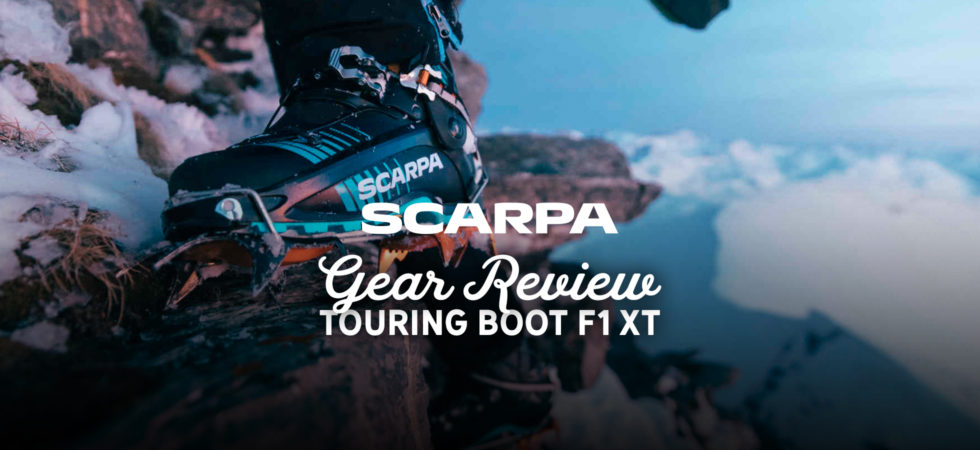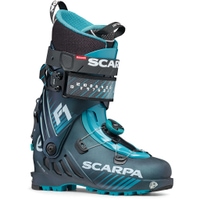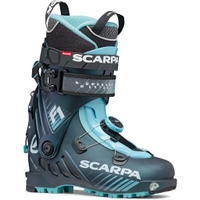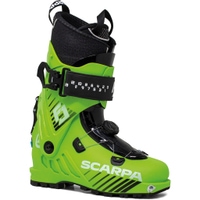Mountain goat with downhill genes? Our review of the Scarpa F1 XT
With a weight of only 1150 grams and a shaft rotation of 47 degrees, the Scarpa F1 XT promises a lot of performance on the ascent – and, according to the manufacturer, it should also have a firm flex of 120. That sounds interesting, I thought to myself, and buckled the new model on at a ski touring innovation test in early February. After only one descent in poor conditions, I was not yet able to form a sufficient opinion, so I tested the boot more extensively on about ten ski tours in the spring.
Lots of freedom of movement on the ascent
Coming from more downhill-oriented boots, I was fascinated right from the start by the incredibly large shaft rotation. Since the new Scarpa model doesn’t have a tongue, the movement is extremely smooth and allows effortless big steps. You feel the freedom of movement not only to the back, but also to the front. In steep terrain, you also have to insert climbing aids noticeably later, which is kind on your knees and offers more edge hold, especially on traverses.

You get into walking mode by flipping a lever that engages with a counterpart – a mechanism that is both simple and extremely easy to use. If the boot doesn’t immediately lock into place, you can easily see what’s wrong.
If you are travelling with crampons under your feet, you have to get used to always having the walking mechanism open. Because unfortunately, the two levers get in each other’s way, so one of them can’t be closed. In exposed areas, I would have liked more support from the shaft from time to time.

The inner boot is rather on the thin side and therefore not too warm. However, this leads to improved breathability, which means that the socks stay dry longer on extended tours and thus warm up better.
Once at the top, the boot can be adjusted quite quickly for the descent: All you have to do is operate the two buckles on the shell, the powerstrap and the lever of the walking mechanism.
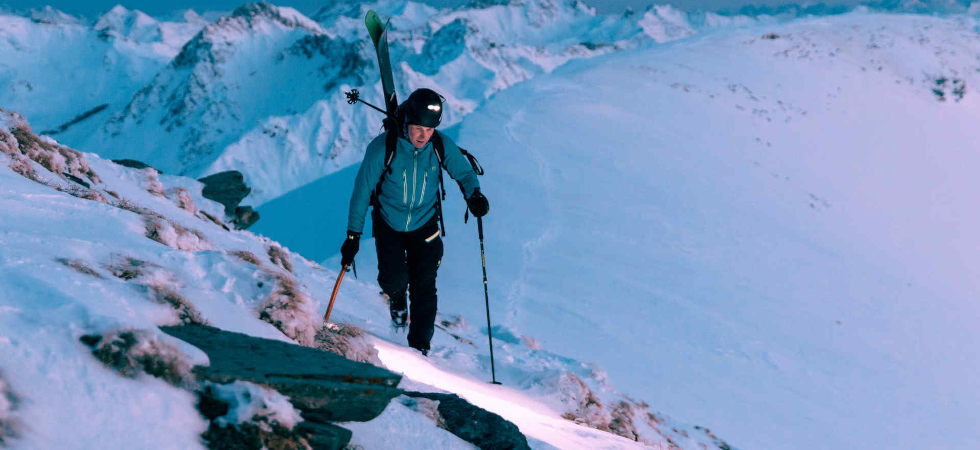
Direct power transmission on the descent
Downhill, the shoe takes a little getting used to. Due to the carbon reinforced shell, the power transmission is very direct, but at the same time difficult to control. Thus, the outer ski quickly started to dig in wind-pressed snow. Impacts are hardly dampened and arrive very directly at the shin. A wrong position over the ski is thus quickly noticeable and punished.

My personal conclusion
Alpinists who enjoy steep flanks or couloirs and are therefore looking for a boot that can reliably put pressure on the edge are well advised with the new Scarpa F1 XT. Ski mountaineers who also want to feel good control and safety at higher speeds should perhaps look for heavier boot models, as these usually have a bit more cushioning.

All in all, the boot is an exceptional representative of its category. In terms of weight and freedom of movement, it belongs to the ascent-oriented shoe group. On the descent, however, it can compete with all-round models that are typically 200 grams heavier.
About the Scarpa F1 series
Within the Scarpa ski touring boot collection, the F1 series with its eight models stands for ski touring with light equipment. The shoes find the ideal balance between carefree walking uphill and fun on the descent. Compared to the 4-Quattro and Maestrale model series, they are significantly lighter, but set themselves apart from the race models from the Alien series with their better downhill performance. Within the F1 series, there are again differences in focus: the F1XT, F1, F1 WMN and F1 JUNIOR models have more downhill genes than their siblings F1 LT, F1 LT WMN, F1 GT and F1 GT WMN.
The models from the Scarpa F1 series:
Looking for more inspiration? Then the following blog posts might be of interest to you:
→ Ski touring boots: Mondopoint & sole length
→ Avalanche equipment guide: Find the equipment you need for safe ski tours
→ Ski Touring Guide: Everything you need to know about equipment for unforgettable ski tours
The test review was written by Sebastian Dorn, department head at Sport Conrad.
Bilder ©Scarpa

